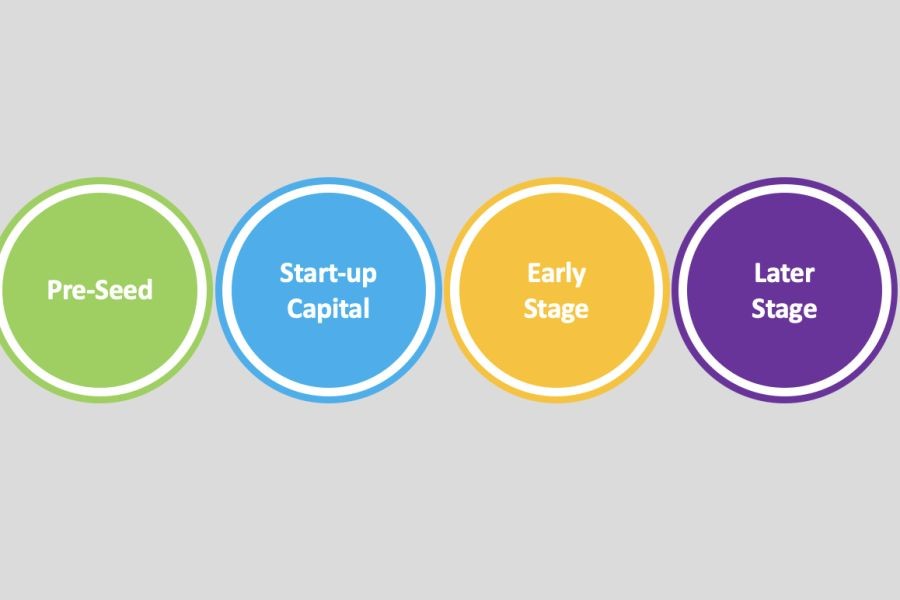The world of venture capital in Australia is often perceived as an exclusive club, reserved for the wealthy and well-connected. Despite the potential for high returns, many Australians find themselves on the outside looking in, unable to tap into the opportunities that venture capital investments offer. But why is this the case, and what can be done to democratize access to venture capital in Australia? This article delves into the intricacies of venture capital in the country, exploring both the barriers and potential solutions.
The Current State of Venture Capital in Australia
Venture capital (VC) plays a crucial role in funding innovative startups and driving economic growth. However, in Australia, the landscape is skewed towards affluent investors. According to the Australian Bureau of Statistics (ABS), the wealthiest 10% of Australians own 45% of the country's wealth, which significantly influences their ability to invest in high-risk, high-reward ventures.
Furthermore, the structure of the VC market favors institutional investors and high-net-worth individuals. The minimum investment thresholds for venture capital funds are often set high, effectively excluding the average investor. According to a 2023 report by the Reserve Bank of Australia (RBA), these thresholds can start at AUD 250,000, a significant barrier for many potential investors.
Case Study: Blackbird Ventures
Blackbird Ventures, one of Australia's leading venture capital firms, exemplifies the current landscape. Founded in 2012, Blackbird has raised over AUD 1 billion across several funds, primarily from institutional investors and wealthy individuals. While the firm has played a pivotal role in nurturing successful startups like Canva and Culture Amp, the accessibility of such investments to the general public remains limited.
This exclusivity is not unique to Australia, as venture capital globally tends to favor those with substantial financial resources. However, this raises a critical question: How can we make venture capital more accessible to everyday Australians?
Barriers to Entry in the Australian Venture Capital Market
1. High Minimum Investment Requirements
- Challenge: The high entry cost is the most significant barrier, with many funds requiring substantial capital commitments.
- Impact: This restricts access to only those with considerable disposable income, leaving out a large swath of potential investors.
2. Regulatory Constraints
- Challenge: Australian Securities and Investments Commission (ASIC) regulations create additional complexity for smaller investors.
- Impact: Compliance and reporting requirements can be onerous, discouraging smaller investors from participating.
3. Lack of Awareness and Education
- Challenge: Many potential investors are unaware of how venture capital works or the risks and rewards involved.
- Impact: This knowledge gap leads to hesitancy and a preference for more traditional investments like property or shares.
Pros and Cons of Venture Capital Investment
Pros:
- Potential for High Returns: Successful VC investments can yield substantial returns, often outperforming other asset classes.
- Support for Innovation: VC funding helps drive innovation, supporting emerging technologies and business models.
- Portfolio Diversification: Including venture capital in a portfolio can provide diversification benefits, reducing overall risk.
Cons:
- High Risk: Many startups fail, leading to potential losses on investments.
- Lack of Liquidity: VC investments are typically long-term and not easily liquidated.
- Limited Access: As discussed, high entry barriers restrict access to many potential investors.
Breaking Down Barriers: Solutions for Greater Accessibility
1. Lowering Minimum Investment Thresholds
Reducing the minimum investment required for venture capital funds can open the door to a broader range of investors. This could involve creating micro-VC funds or platforms that pool smaller investments from multiple individuals to meet fund requirements.
2. Enhancing Investor Education
Education initiatives aimed at demystifying venture capital can empower more Australians to participate. Programs offered by universities or industry bodies like the Australian Investment Council can help bridge the knowledge gap.
3. Leveraging Technology
Platforms like equity crowdfunding have already begun to democratize access to startup investments. Further technological advancements could streamline the investment process, making it more inclusive.
Future Trends and Predictions
The Australian venture capital landscape is poised for transformation. As technology continues to evolve, new platforms and models could emerge, facilitating broader participation. According to Deloitte's 2024 Technology Predictions, fintech innovations are expected to reduce investment barriers significantly, making venture capital more accessible to everyday Australians.
Additionally, regulatory changes could play a pivotal role. The Australian government is actively exploring ways to foster innovation and support startups, which may include revisiting existing regulations to encourage greater participation in venture capital.
Conclusion
While venture capital in Australia remains largely accessible to the wealthy, there are numerous avenues to make it more inclusive. By addressing high entry barriers, enhancing education, and leveraging technology, it's possible to democratize access to these promising investment opportunities. As Australia continues to foster a culture of innovation, broadening access to venture capital could lead to a more dynamic and inclusive economy.
What are your thoughts on the current state of venture capital in Australia? Share your insights and join the conversation below.
People Also Ask
- How does venture capital impact businesses in Australia? Venture capital provides crucial funding for startups, enabling them to scale, innovate, and compete globally.
- What are the biggest misconceptions about venture capital? Many believe that only tech startups benefit from VC, but it also supports sectors like healthcare and renewable energy.
- What strategies can make venture capital more accessible? Lowering investment thresholds and enhancing investor education are key strategies for increasing accessibility.
Related Search Queries
- How to invest in venture capital Australia
- Venture capital funds with low minimums
- Benefits of venture capital for startups
- Equity crowdfunding platforms Australia
- Regulations for venture capital in Australia
- Venture capital vs private equity
- Venture capital success stories Australia
- Impact of venture capital on Australian economy
- Future of venture capital in Australia
- Venture capital investment risks


























hkfrosario553
7 months ago